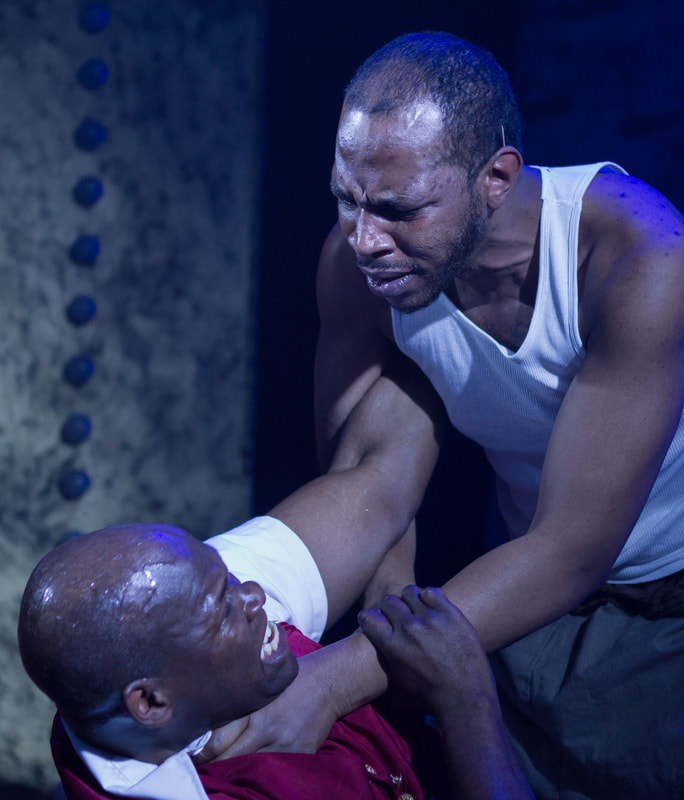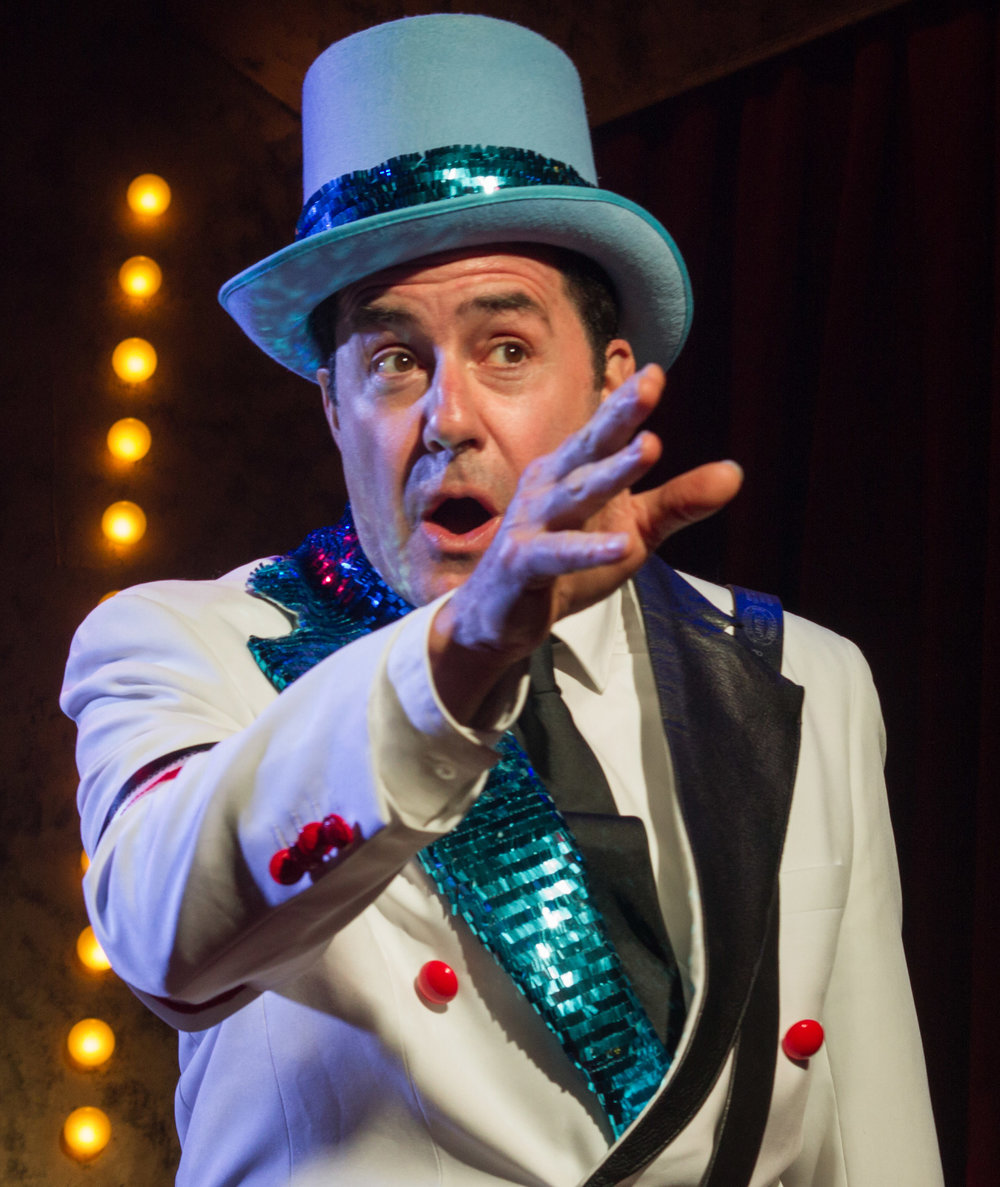“Black or white?” asks a blind character dressed in a blue-and-red uniform. We’re entering a theater in Lower Manhattan, and the woman is asking me to choose my race. I elect to be marked as black, and the woman stripes my forehead accordingly with a dark grease pencil. This distinction will color my and my fellow participants’ experience for the next few hours.
Herded into a hallway, we are met by a blond woman in a Confederate flag-printed debutante gown who uses racial epithets with a smile and explains where we are: a “dystopian ethno-theme park” called SupremacyLand, where “mass incarceration, racial carnage, and political incorrectness have never been more entertaining.” At a glance, the crowd is diverse—a range of ages, a spectrum of skin colors—and many recoil visibly at the language being used. But others laugh nervously at the usher’s moments of levity, returning her wide grin. Should we play along, like obedient audience members, or are we meant to call her character out for her racist language and assertions? It’s a question of complicity that structures the whole of one’s time in SupremacyLand. For now, we all stay quiet and allow the actor to speak her lines with impunity. I’m about to find out what I’d do in a society where racism is openly encouraged. I find that my heart rate rises as the rhetoric turns darker.

We are at 3/Fifths, an ambitious and provocative immersive theater experience written and produced by James Scruggs, and staged last year at Lower Manhattan’s 3-Legged Dog Art & Technology Center. The centerpiece is SupremacyLand, where participants, at first wary, soon queue up for the various carnival activities. Some of them play a Wheel of Fortune-like game that quizzes participants on “Reasons to Be Lynched,” spun by a smiling Natalie Chapman, a member of the carnival ensemble. The questions are harrowing—”looking a white person in the eye” is one example of a lynchable offense—but Chapman, whose name tag bears the same dehumanizing n-word as the rest of the carnival’s workers of color, encourages everyone to cheer when someone answers a question correctly. I want to make her job easier, in both the role she plays and the heavy burden she carries as an actress, so I celebrate when she tells me I’ve done a good job, and find myself thanking her effusively for the Supremacy dollars I’ve earned, which can be used to buy water or glasses of wine.
Many attendees will walk away with grisly souvenirs. At one activity hosted by the mostly black cast, participants learn how to make a noose—and perhaps turn it into jewelry decorated with red, white, and blue stars. One participant says she is making a bracelet for her child. Another booth instructs participants to toss bags of evidence around the prone body of a cast member traced in white. A video game against the wall includes instructions to shake a handheld toy van vigorously to “win.” A cast member shows me how to finesse it. “Like this”—he flicks his wrist, and a figure on the screen is tossed about inside. He hands the remote back for me to try and I feel accomplished when the figure stops moving. How easily my initial discomfort at the game’s premise becomes disconnected from its corresponding narrative in real life! I was game to master something so violent, as was apparently everyone in the long line behind me.

I’m aware of the cognitive dissonance that each booth and interaction is meant to inspire, on multiple levels: the opportunity to briefly play-act a different race and to question one’s willingness to turn the realities of racial prejudice into a game; the silence of most people when racism is on display. In the moment, I thought that my role as an audience member was to facilitate the cast members in theirs. The irony and lesson are not lost on me. How often have I stayed silent in other situations using similar justifications?

(Photo: William Widmer)
This isn’t a made-up world, the cast is showing us; it is real, both in the theater and beyond. How participants act here offers a reflection of what they might do—or not do—in their lives beyond the fourth wall. Danielle Rosvally, a clinical assistant professor of theater and dance at SUNY Buffalo, says that audiences have been culturally socialized to play a passive role in theater, but that in immersive theater like SupremacyLand, “Part of the purpose is to really get the audience unpacking [this] social programming and … how we can change it.”
By watching others act or stay silent, and reflecting on our own reaction to injustice, we can learn to see ourselves as actors in everyday situations, with the agency to act—or not—as a reflection of our own values and desires. Change might not happen in the theater, but it could happen in the days and weeks afterward.
When the carnival comes to an end, the participants are separated by their chosen race. The “whites” stay in the room and are offered a rousing pro-supremacy diatribe by the general, played by Ken Straus, while I join the “black” participants in the tube-like hallway, fashioned into a version of a slave ship through video and music. While the separation feels disconcerting, it is also a relief to leave the white supremacists behind.
A version of this story originally appeared in the May 2018 issue of Pacific Standard. Subscribe now and get eight issues/year or purchase a single copy of the magazine. It was first published online on April 19th, 2018, exclusively for PS Premium members.





